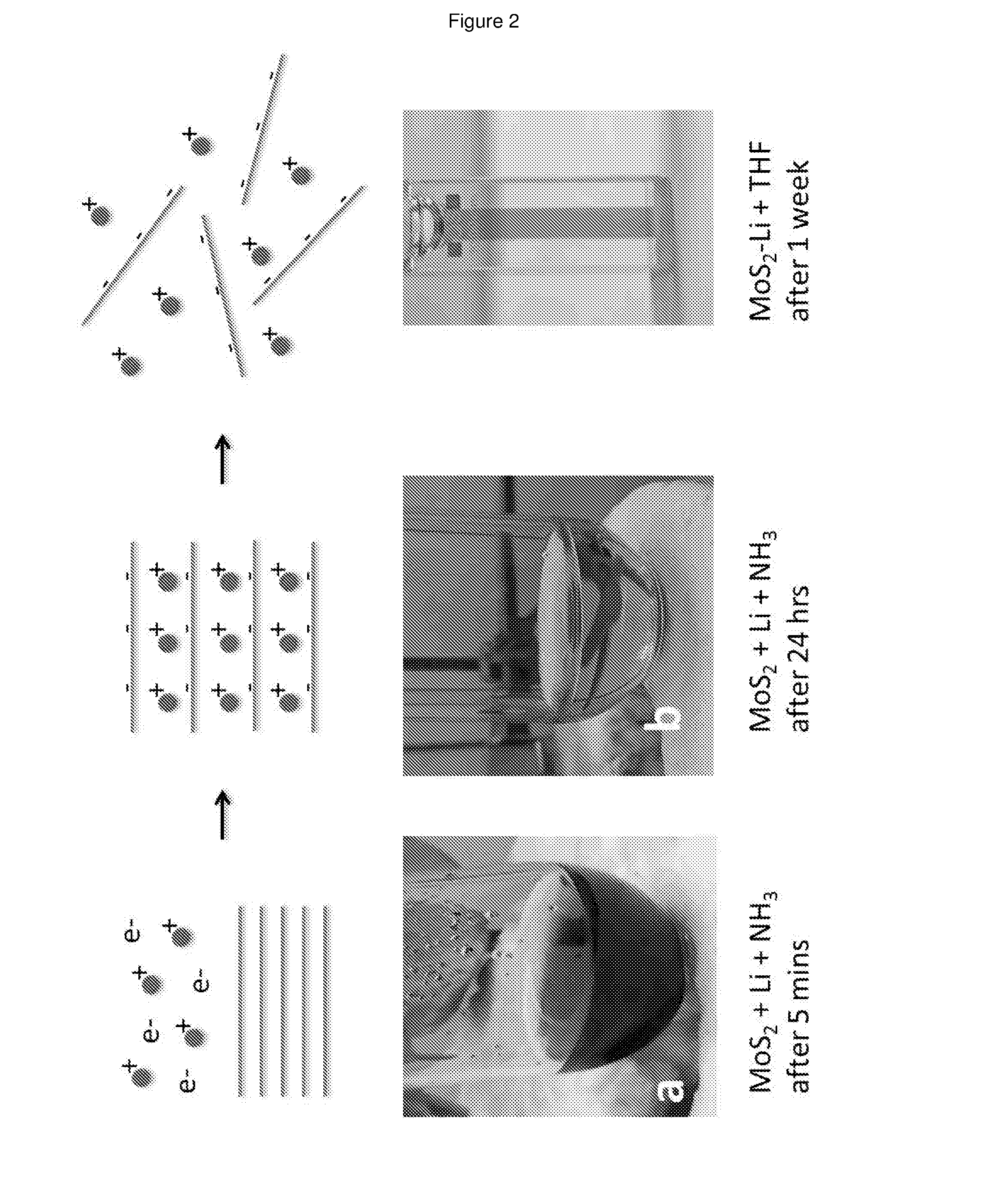Method for producing dispersions of nanosheets
a nano-sheet and dispersive technology, applied in the direction of zirconium compounds, colloidal chemistry, vanadium compounds, etc., can solve the problems of difficult scaling, added expense, never been isolated as nano-sheets, etc., and achieve the effect of avoiding the damage caused by such an agitation process
- Summary
- Abstract
- Description
- Claims
- Application Information
AI Technical Summary
Benefits of technology
Problems solved by technology
Method used
Image
Examples
example
Nanosheets
[0080]The layered materials listed in Table 1 were outgassed by heating at the temperatures listed in Table 1 at pressures of −6 mbar (obtained using a turbopump) in order to remove adsorbed species. The temperature is carefully controlled to be below that at which the layered material decomposes. The metal (as indicated in Table 1) was added to the outgassed layered material such that the stoichiometric ratio of alkali metal:structural unit in the layered material was typically ˜1:1 or less. Liquid ammonia was then condensed onto the outgassed layered material and metal at 230K. This was done using a pre-cleaned, pre-baked, high-integrity, leak-tight gas-handling manifold. The reaction was left for more than 24 hours for the intercalation to take place. Upon immediate condensation of the liquid ammonia onto the alkali metal, a deep blue liquid formed (FIG. 2). This is a well-known signature of the presence of solvated electrons. When the charge transfer / intercalation was ...
PUM
| Property | Measurement | Unit |
|---|---|---|
| Polarity | aaaaa | aaaaa |
| Dimension | aaaaa | aaaaa |
| Stability | aaaaa | aaaaa |
Abstract
Description
Claims
Application Information
 Login to View More
Login to View More - R&D
- Intellectual Property
- Life Sciences
- Materials
- Tech Scout
- Unparalleled Data Quality
- Higher Quality Content
- 60% Fewer Hallucinations
Browse by: Latest US Patents, China's latest patents, Technical Efficacy Thesaurus, Application Domain, Technology Topic, Popular Technical Reports.
© 2025 PatSnap. All rights reserved.Legal|Privacy policy|Modern Slavery Act Transparency Statement|Sitemap|About US| Contact US: help@patsnap.com



